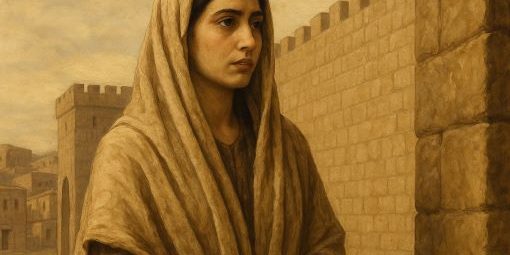From The Rabbi’s Study…Shabbat, June 20,21, 2025/24,25, Sivan 5785
The Torah portion continues with the ten spies and their report, the children of Israel rebel, and the punishment of the children of Israel. Then the rules pertaining to various sacrificial offerings, and the tzitzit – the fringes of the prayer shawl.
Interesting concepts and values from the Torah are the sin of the spies, and the Tallit.
The Mitzvot are the challah and the tzitzit.
Let us look at the spies that Moses set into Canaan. The sin of the spies: looking on oneself as insignificant. There were twelve spies that Moses sent to find out everything about the inhabitants in Canaan. Each man represented a tribe of Israel. Ten reported that the land was vast and the inhabitants were powerful, they felt. One cannot know exactly if their reports were credible or from their imagination. However, the Torah appears to be warning that if we look upon ourselves as small and insignificant, others will take us precisely at our own self-evaluation. Keep in mind that two gave Moses a favorable report. The two spies were Joshua and Caleb. Both felt the Israelites could conquer the land with G-d’s help, because they believed in G-d’s promise.
The Haftarah tells the story of the two spies. Joshua and Caleb were sent to Jericho with the purpose to determine the morale of the Canaanites. The Canaanites knew there were spies within the city. The two men took shelter in the home of Rachab, a prostitute, who assures them that the Israelites will conquer the country. She also asks that they save her and her family when Israel is victorious, and they agree to do so.
Thus on their return to the camp Joshua and Caleb assured their victory.
An interesting fact is that Rachab lived within the city walls. She told Joshua that she will hang her red shawl out her window so the army will know that the people in this place are with Israel. Hence the future terminology “Red Light District” denotes that prostitutes dwell there.
Both the Torah and Haftarah are linked to Moses and the spies. The concept of G-d is both in the heavens and on the earth. Also, an act of kindness begets another.
Remember, in the dark times it was dangerous for the Jewish people to study the Torah. The Prophets and their writings were studied because the subject matter was safe. Each Torah parsha (reading) has a similar theme that one can connect to a specific Haftarah. The synagogue’s Torah section final reading is taken from the Prophets known as the Haftarot (plural of Haftarah).
What is fascinating to me, and maybe you also, is the fact that one does not have to agree with the majority. Also, once again, a woman is mentioned helping the Jewish people survive. Further, the Ten Commandments are NOT the reason we need ten people (in some shuls only men) to make a minyan (ten for praying). The ten people for a minyan are taken from this Torah portion because they represented the people of the community. Not to belittle the bravery and military awareness of Joshua and Caleb and standing up to the other ten spies and Moses. Caleb is the man that walked into the Sea of Reeds first while Moses held up his staff. It was only until the water covered Caleb, a man of true faith in G-d, that the sea split!
May we continue to pray for the release of our hostages from Hamas.
May we continue to pray for our brethren in Israel to remain strong together fighting against Iran and to remain safe.
Am Ysrael Chai, Long Live Israel!
Shabbat Shalom,
Rabbi Helene Ainbinder







